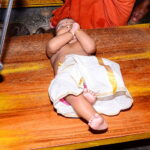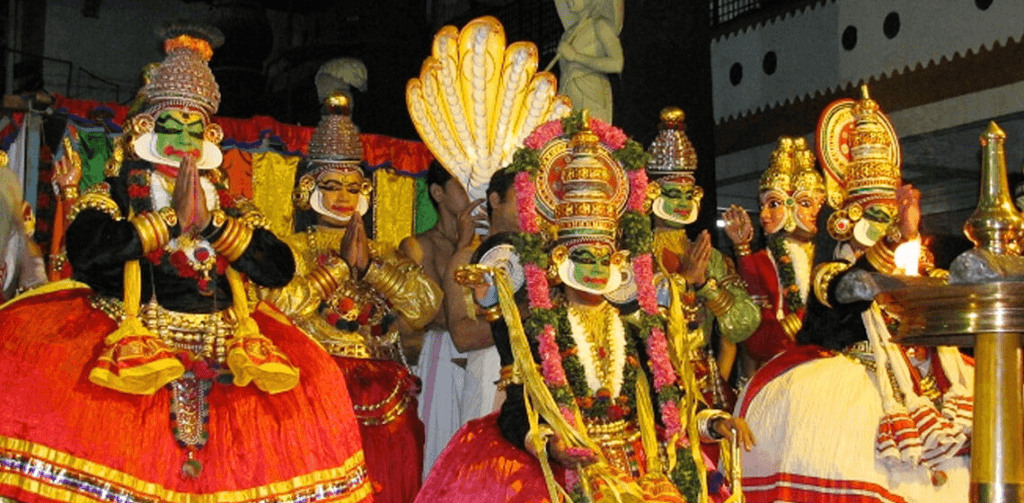
Guruvayur, often referred to as the “Dwarka of the South,” is not only a significant pilgrimage site for devotees of Lord Krishna but also a vibrant center for the traditional performing arts of Kerala. Among these, Krishnanattam holds a special place, weaving together the cultural, artistic, and spiritual tapestry of the region. This unique dance-drama, deeply rooted in devotion, tells the life story of Lord Krishna, and its performance at the Guruvayur Temple is a tradition that dates back centuries.
Krishnanattam – The Origin
Krishnanattam was created in the 17th century by the Zamorin King, Manavedan Raja of Kozhikode. The king was an ardent devotee of Lord Krishna, and he composed an elaborate poetic work titled “Krishnageethi,” based on the life and exploits of Krishna as described in the Bhagavata Purana. Inspired by the success of Ramanattam, a similar dance-drama on the life of Lord Rama, Manavedan Raja sought to create a parallel art form that would narrate the tales of Krishna. Thus, Krishnanattam was born, combining elements of dance, music, and acting to depict the divine plays of Krishna.
Krishnanattam – The plays
Krishnanattam is performed in a series of eight plays, each focusing on a different phase of Krishna’s life. These include:
- Avataram – The birth of Krishna.
- Kaliyamardanam – The subduing of the serpent Kaliya.
- Rasakrida – The divine dance with the Gopis.
- Kamsavadham – The slaying of the demon king Kamsa.
- Swayamvaram – The marriage of Krishna and Rukmini.
- Banayuddham – The battle with Banasura.
- Vividavadham – The killing of the demon Vivida.
- Swargarohanam – Krishna’s ascent to heaven.
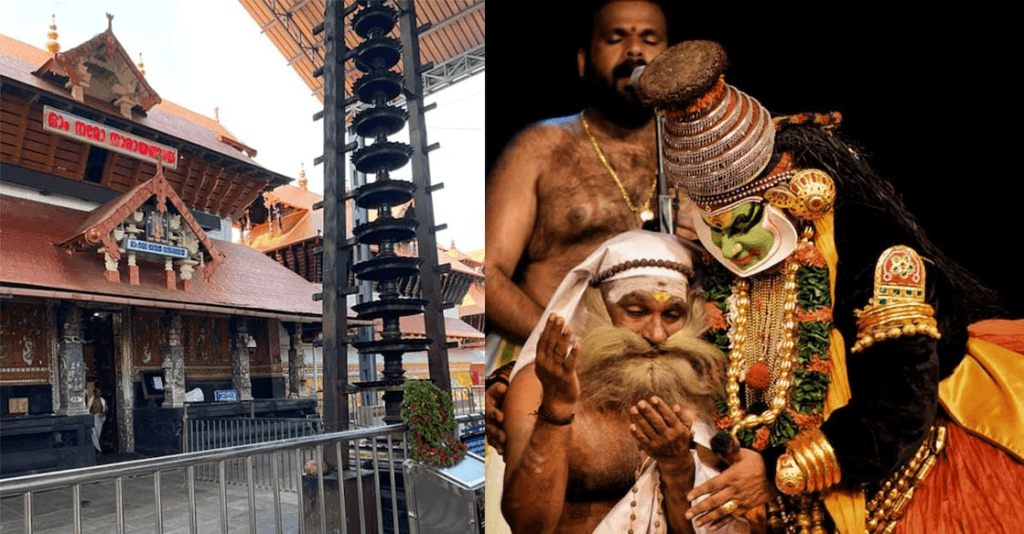
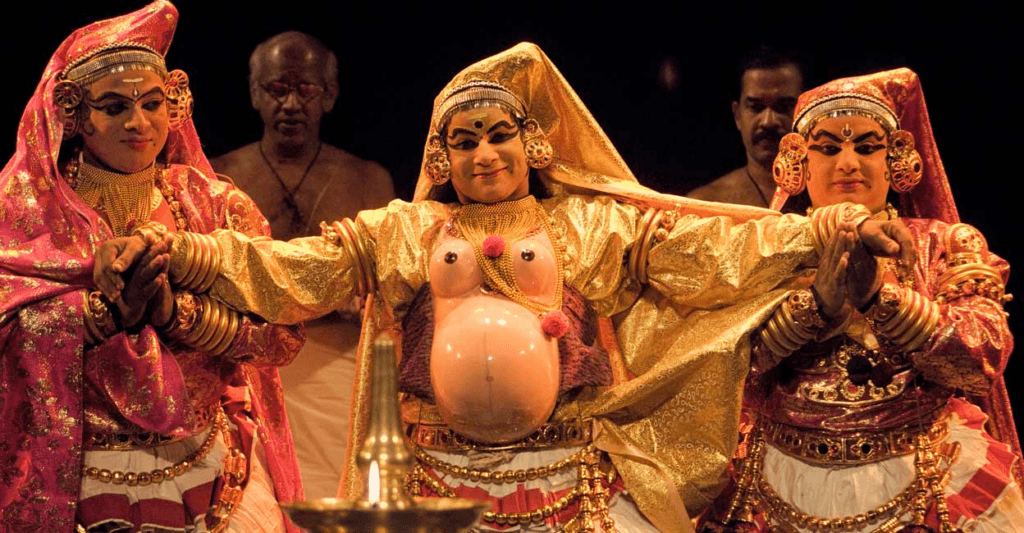
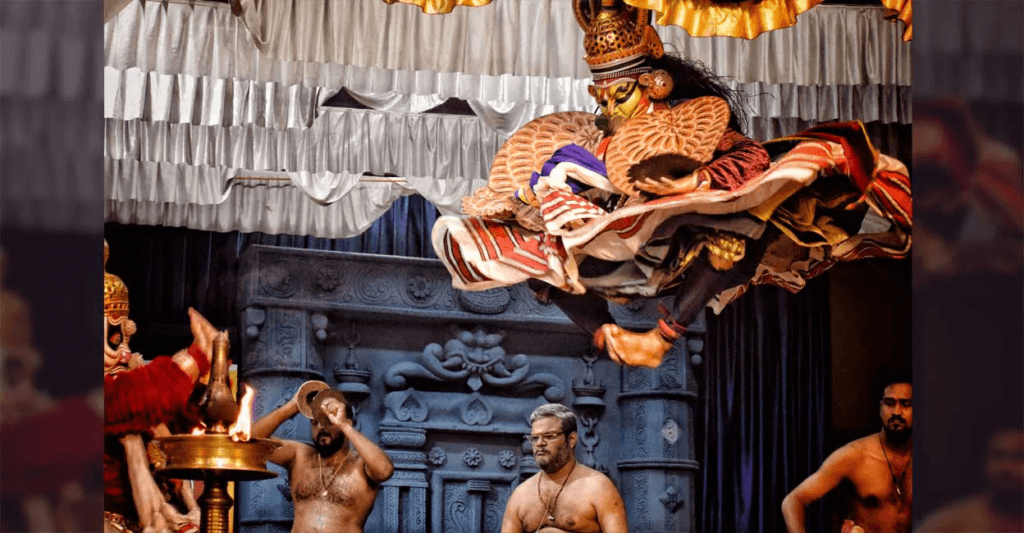
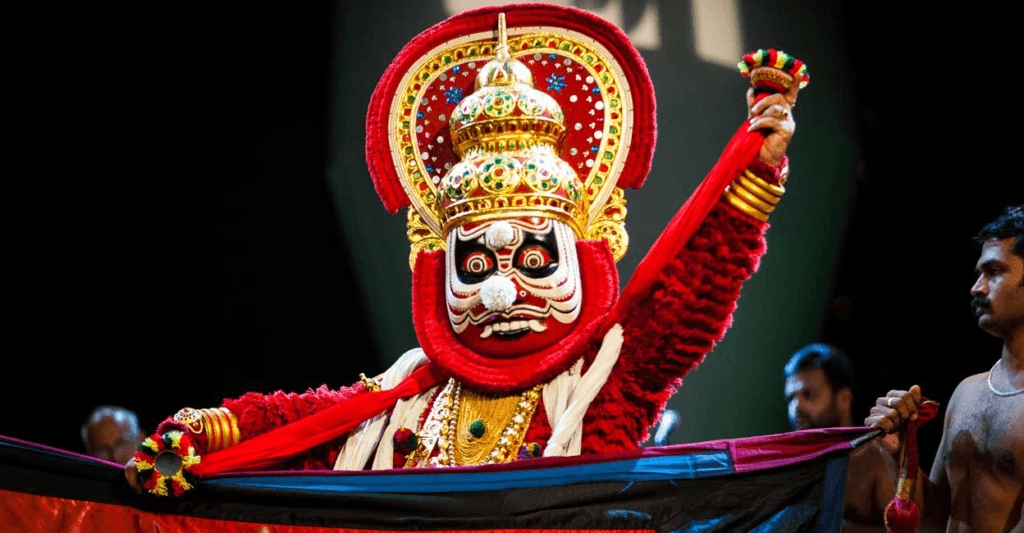
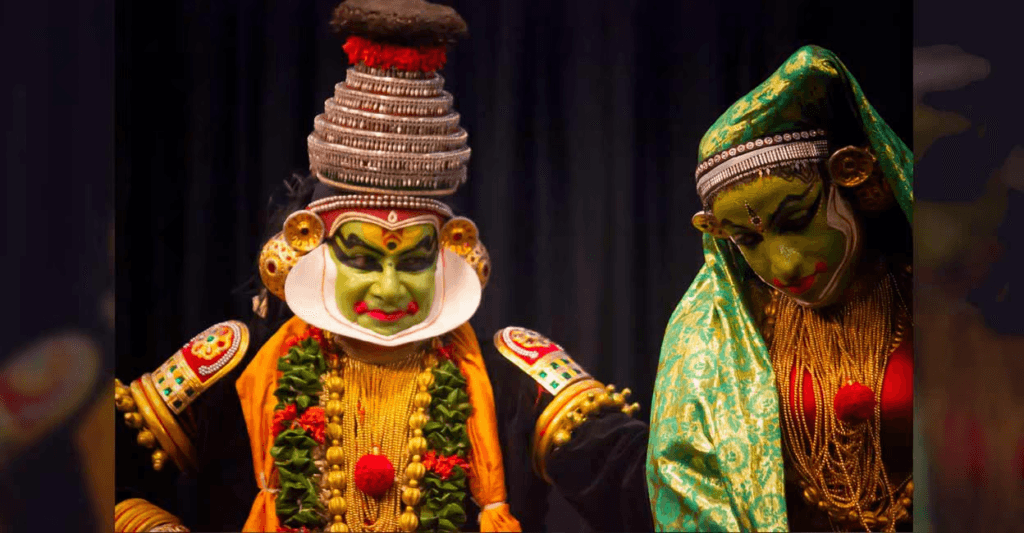
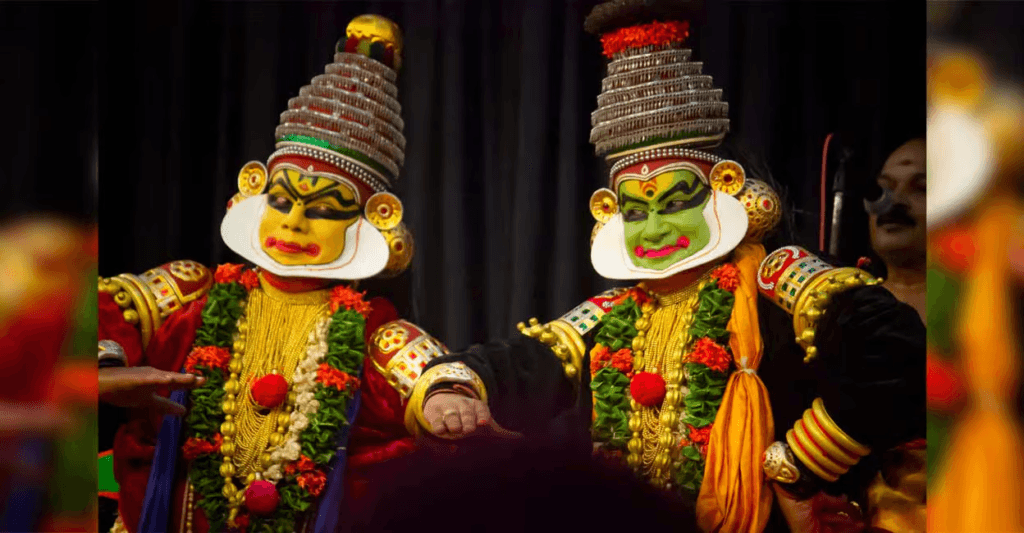
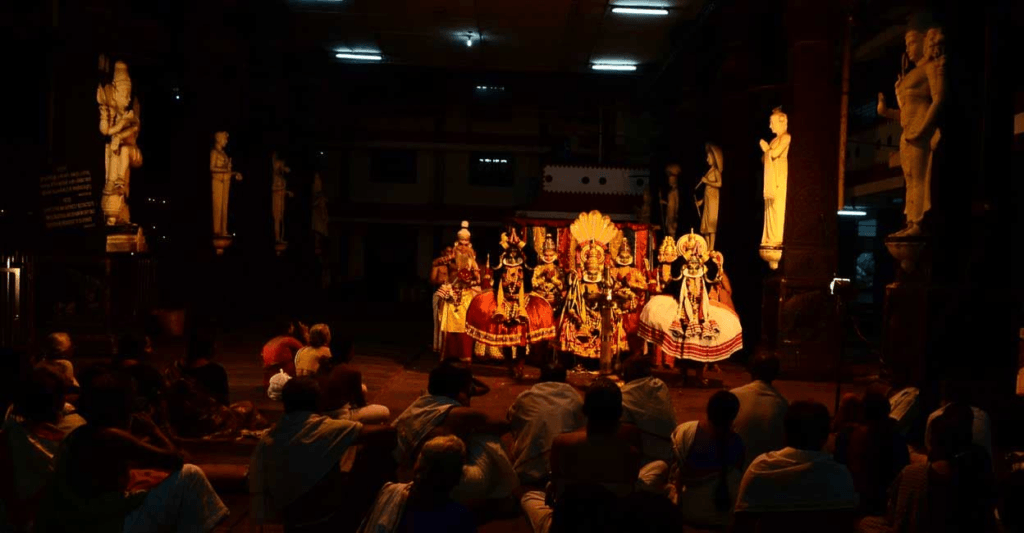
Each play is performed on consecutive nights, with the entire cycle spanning eight days. The performers, adorned in elaborate costumes and makeup, bring to life the divine leelas (playful activities) of Krishna through a combination of graceful dance movements, dramatic expressions, and soulful music. The performance is accompanied by traditional instruments like the chenda, maddalam, and ilathalam, creating a mesmerizing auditory experience.
Significance in Guruvayur Temple
Krishnanattam is more than just a cultural performance at the Guruvayur Temple; it is an offering to Lord Krishna himself. The tradition of performing Krishnanattam at the temple began in the 18th century, and it has since become an integral part of the temple’s rituals. Devotees often sponsor a performance as a form of worship or to fulfill a vow. The art form is also considered a powerful medium for invoking the blessings of the deity, especially during special occasions like the temple festival and Janmashtami.
The significance of Krishnanattam in Guruvayur extends beyond its religious context. It is a living tradition that preserves the classical art forms of Kerala, passing down the intricate techniques, gestures, and stories from generation to generation. The Guruvayur Devaswom (temple administration) plays a crucial role in maintaining this tradition, ensuring that the art form is performed with the same devotion and rigor as it was centuries ago.
Krishnanattam as a cultural heritage
Krishnanattam is a testament to the rich cultural heritage of Kerala. It encapsulates the essence of bhakti (devotion), blending it with the artistic expressions of dance and music. The art form has inspired various other classical dance traditions in Kerala, including Kathakali, which shares a similar narrative style and performance structure.
For visitors and devotees, witnessing a Krishnanattam performance at Guruvayur is a profound spiritual experience. It offers a glimpse into the divine leelas of Lord Krishna, while also connecting them to the cultural roots of Kerala. The rhythmic movements, vibrant costumes, and captivating music transport the audience to a world where the lines between the mortal and the divine blur, allowing them to experience the presence of Krishna in a deeply personal and immersive way.
Krishnanattam Booking
Rates
| Krishnanattam | Purpose of Belief | Rates |
| AVATHARAM | For a birth of a child | 3000 Rs |
| KALIYA MARDHANAM | To Remove the effect of poison | 3000 Rs |
| RASAKREEDA | For the well being of unmarried girls, to end disputes between couples | 3000 Rs |
| KAMSAVADHAM | To remove enemies | 3000 Rs |
| SWAYAM VARAM | For a happy matrimony | 3000 Rs |
| BANAYUDHAM | For the fulfillment of vows | 3000 Rs |
| VIVIDHAVADHAM | To eliminate poverty and increase yield from farms | 3000 Rs |
| SWARGAROHANAM | For salvation of a departed soul-(Those who wish to book Swargarohanam should book avatharam also) | 3300 Rs |
Krishnanattam Calander
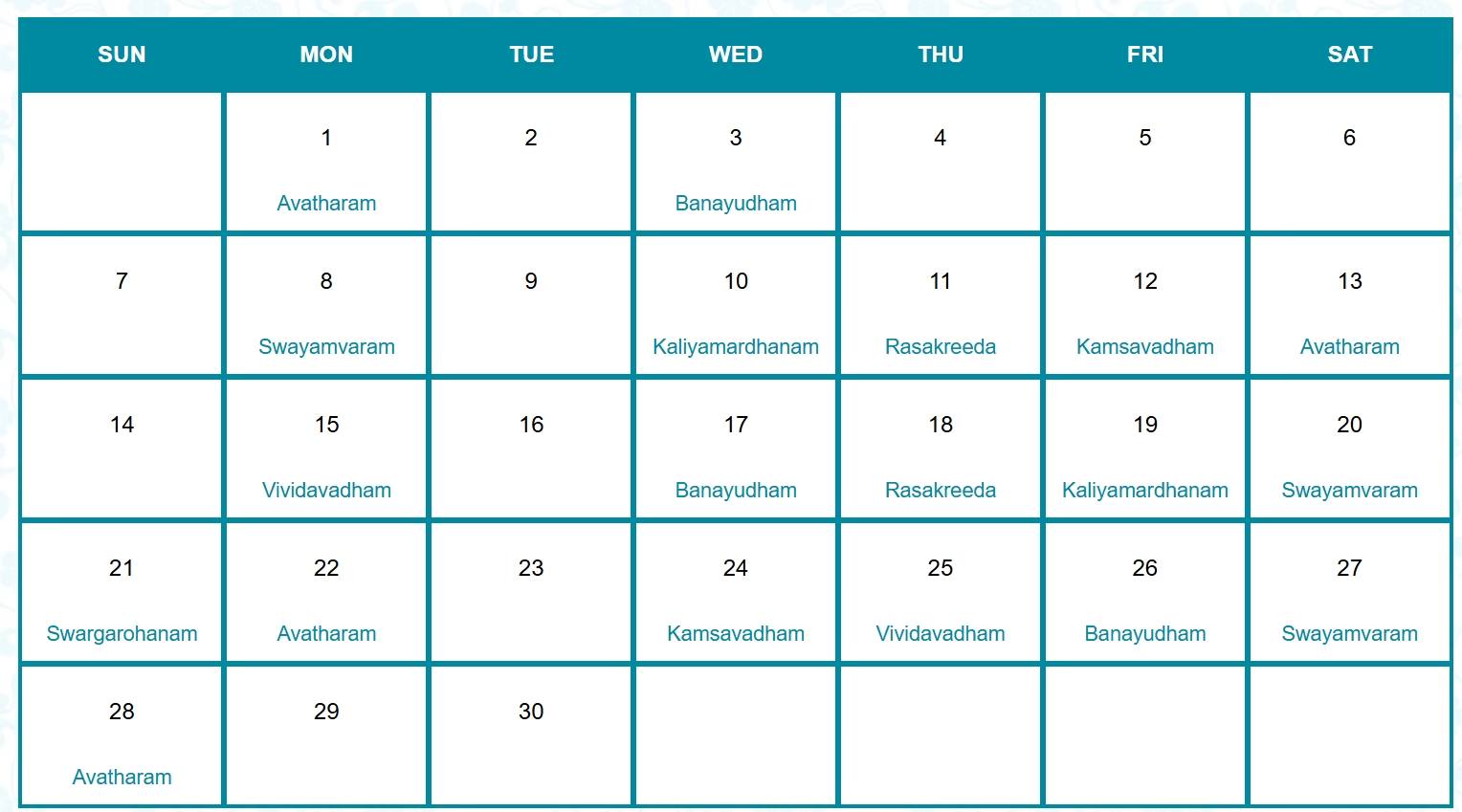
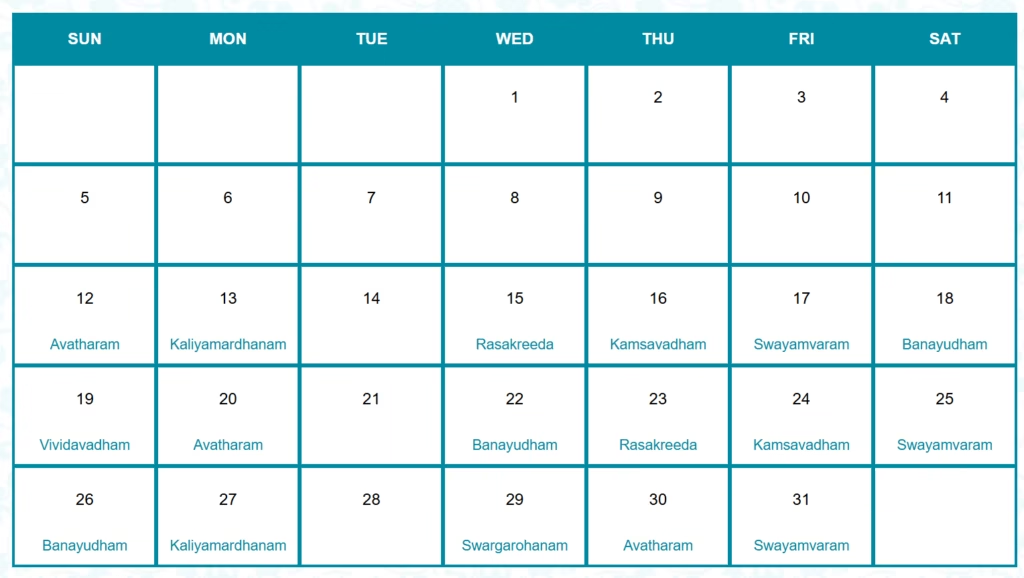
Days where there are no shows conducted
There is no performance on Tuesdays and during off-season (between June and August).
Reporting time
Inside Temple 10.30 pm. Physical appearance is not mandatory.
Conclusion
Krishnanattam is not just a performing art; it is a sacred tradition that continues to thrive within the walls of the Guruvayur Temple. Its significance lies in its ability to convey the divine stories of Krishna, while also preserving the rich cultural heritage of Kerala. For devotees and art enthusiasts alike, Krishnanattam is a must-experience spectacle that offers both spiritual fulfillment and artistic delight, making it an integral part of the Guruvayur temple experience.


